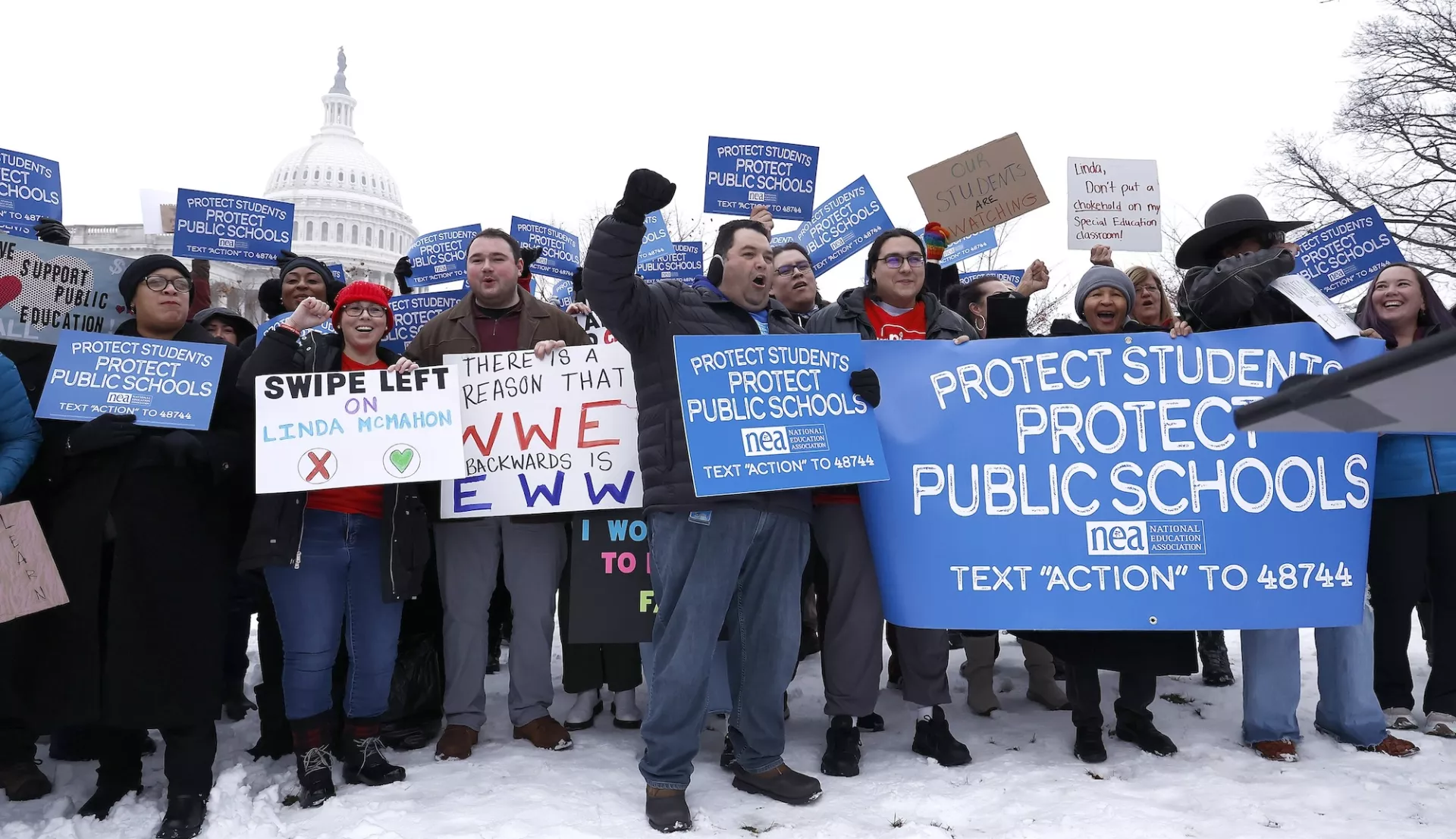Key Takeaways
- Educators and advocates are raising alarms about the Trump administration's efforts to dismantle public education through drastic funding cuts, privatization, and the proposed elimination of the U.S. Department of Education.
- Threats to cut to federal funding would strip essential programs like Title I and special education, as well as initiatives that create safe and welcoming schools.
- Advocates stress the need for leadership that prioritizes students, supports educators, and ensures equal opportunities for all children, regardless of background or ability.
As educators from every corner of the country continue to share their unwavering commitment to their students, along with their fears and frustration over the Trump administration’s overreach and threats to dismantle public education, one thing remains clear: The fight to protect public education is about more than just policy—it’s about people. They see firsthand the real and lasting harm that the proposed actions by the administration will have on their students, schools, and communities.

On February 12, teacher Brian Skinner captured this sentiment when he spoke to a crowd of educators, community leaders, and elected officials outside the U.S. Capitol during NEA’s rally to protect students and public schools.
“It’s no secret that I disagree with pretty much all of the policies and agendas of this administration,” said Skinner, a high school special education teacher from Kansas. “But there’s a big difference between disagreeing with a policy or an agenda and recognizing the very real harm that can come from some of the actions that are being proposed here today.”
He shared with rally-goers the stories of the students who depend on educators—students who would be left behind if federal funding is stripped away. Drawing on his vast network as the 2023 Kansas Teacher of the Year, he underscored the great work of his colleagues across the country:
“The idea of dismantling the Department of Education and the programs that fall under it, it's not just numbers on a page. There’s a human piece to that as well,” explained Skinner. “The reality is that millions of kids and educators rely on these funds to do what they do … [and] taking funds from a system that serves 90 percent of our kids disproportionately hurts those who either cannot choose or are not chosen by a private school.”
Trump’s unpopular agenda
The demonstration came in response to the sweeping executive orders issued during the early weeks of the Trump administration that threaten the well-being of millions of Americans. From the drastic funding freezes to undermining educational and labor protections, this administration has marked its intent to dismantle long-standing federal programs that serve students, workers, and vulnerable communities.
Rural communities would be hit especially hard, as many of its public schools rely heavily on federal funding. Without these resources, small districts, for example, would struggle to keep schools open, leading to school closures.
Now, with the nomination of Linda McMahon as secretary, the administration is doubling down on its aggressive privatization agenda—jeopardizing the future of public education and essential social protections.
Quote byBecky Pringle , NEA President
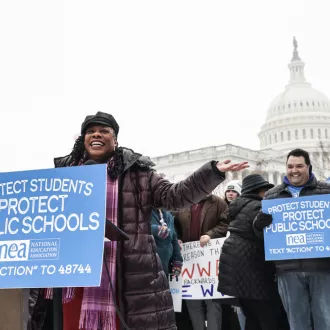
Gutting public education and student protections
One of the administration's most alarming actions is to push to eliminate the U.S. Department of Education (ED) and move taxpayer dollars toward private school vouchers. Public schools, where 90 percent of American children and 95 percent of students with disabilities are educated, would face massive funding shortfalls.
McMahon’s nomination exacerbates these concerns. Lacking any experience in public education, she has aligned herself with Trump’s extreme “Project 2025” plan to defund public schools and is set to follow in the footsteps of Betsy DeVos: Prioritizing privatization over equity and slashing critical programs that support low-income students, as well as students with disabilities.
What’s at stake?
Special Education
Title I
Diversity, Equity, and Inclusion
Vulnerable Student Groups
Parents and educators unite
Daniella Knight, a mother to three school-aged children, fears what this means for families like hers. Her family relies on their public schools, not just for an education, but for a community that understands and supports them.
“Without the Department of Education, kids like mine would lose critical resources like mental health assistance, after school programs, career prep and other support that help them thrive and achieve,” said Knight. “Two of my children are neuro divergent and they rely on the support and accommodations in their 504 plans … our president wants to take that away.”
But not if people continue to come together and stand up for what students need and deserve.
Educators like Turquoise Lejeune Parker, a media specialist, in Durham, N.C., know what’s required to protect public education and the students they serve.
“If we are serious about advancing all students and all our public school workers, we need to provide them with more, not less,” Parker said. “We want solid leaders who believe in the promise of public education, who listen to those of us who know the names of our kids who enter our school buildings every morning. We need leaders who will show up in the snow, march in the street with us, and understand that we must invest in our students, not dismantle a system.”
Speaker after speaker shared the negative impact that shutting down ED and nominating McMahon would have on students, educators and public schools across the country. These and other deliberate acts are a part of a broader strategy by the Trump administration to manufacture crises that justify consolidating power, dismantling federal agencies that help people, and reallocating public tax dollars to fund tax breaks for his CEO and billionaire donors.
While most Americans believe that every student deserves opportunity, resources, and support to reach their potential no matter where they live, the color of their skin, or how much their family earns, now is not the time to be silent, said Pringle.
“We can’t [be silent]. We will stand up to McMahon and every other anti-public education politician, elected or anointed who tries to harm our students and educators in our communities,” she said. “With legal action, we will protect our students; using legislative action, we will protect our educators; organizing people action, we will rise up in every community across this nation.”
Protect Students and Public Schools Rally
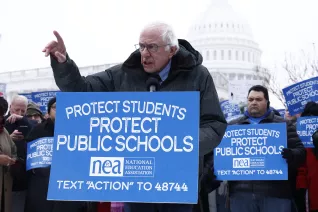

"I'll tell you what the fundamental issue is … what these guys, the oligarchs and the billionaires, want to do is cut program after program, including education in order to give massive tax breaks to the very richest people in this country. ... They want to use taxpayer money to support private schools so that wealthy kids can get a discount. We understand ... that public education is the backbone of American democracy. ... [O]ur job is not to destroy public education. It is to significantly improve it."
Getty Images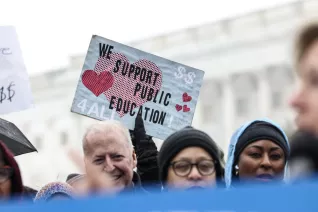

Jati Lindsay
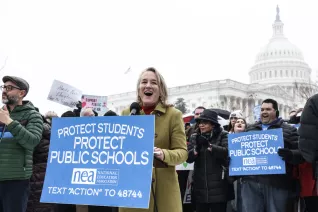

Jati Lindsay
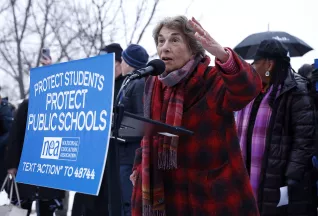

Getty Images
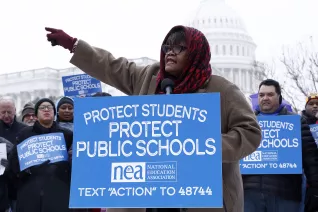

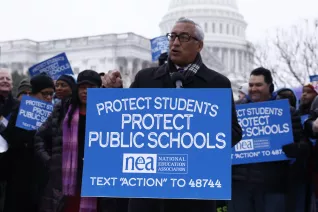

Getty Images
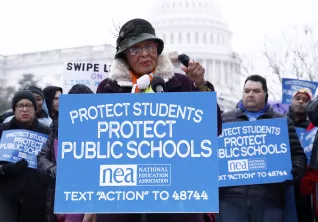

Getty Images
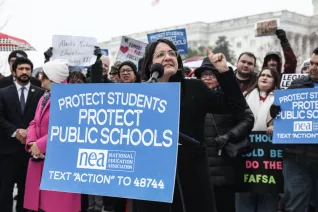

Jati Lindsay
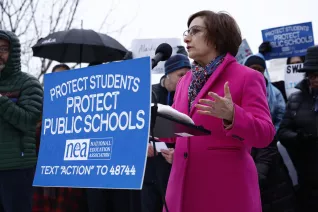

Getty Images
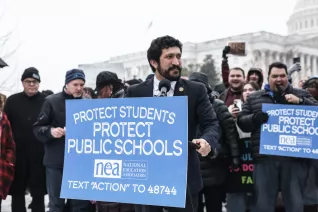

Jati Lindsay
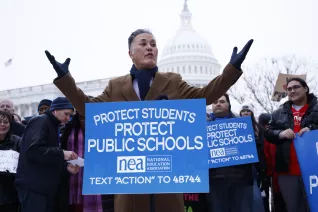

Getty Images
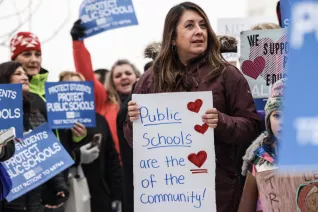

Jati Lindsay
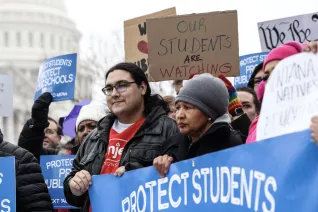

Jati Lindsay
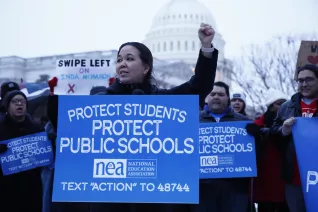

Getty Images
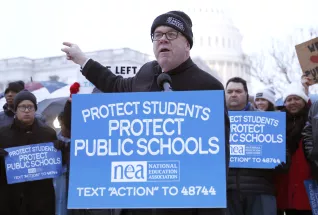

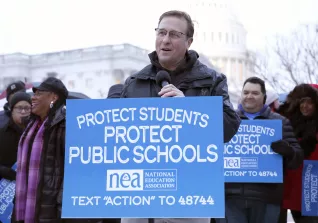

Getty Images
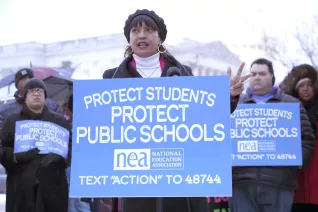

Getty Images
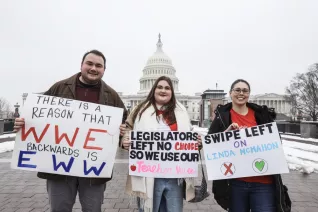

Jati Lindsay
